
So, you’re ready for some 1440p resolution gaming on your new 144Hz refresh rate monitor. The problem is that you’re rocking an old graphics card that can barely meet 60FPS at 1440p alone.
| Preview | Product | Memory | Output | Price |
|---|---|---|---|---|
| EVGA GeForce RTX 2080 Ti XC | 11 GB GDDR6 | 3× DisplayPort 1.4, 1× HDMI 2.0b, 1× USB-C | ||
| Nvidia GeForce RTX 2070 Super | 8 GB GDDR6 | DisplayPort, HDMI | ||
| EVGA GeForce GTX 1080 Ti FTW3 GAMING | 11 GB of GDDR5X | 3 x DisplayPort 1.4, 1 x HDMI 2.0b, 1 x DVI-D DL | ||
| Nvidia Geforce RTX 2060 Super | 8 GB GDDR6 | DisplayPort, HDMI, DVI-DLStandard | ||
| Asus Radeon RX 5700 | 8 GB GDDR6 | DisplayPort 1.4, HDMI | ||
| Zotac Nvidia Geforce GTX 1660 Ti | 6 GB GDDR6 | 3 x DisplayPort 1.4, HDMI 2.0b |
Due to the overwhelming number of choices, you’re likely having a hard time picking the right one for your needs. Don’t fret because we’ve left no stone unturned to come up with the ultimate list of the best GPUs for 1440p 144Hz gaming experience.
This means that no matter if you just want to play some AAA titles at 1440p on max details or just want to play games at 1440p and hit the 144Hz, we’ve got everything you need.
Contents of this Page
Why Does Choosing the Right Graphics Card Matter?
In the world of gaming, your graphics card does most of the work. It does the most intensive graphical task to provide you with the best graphical performance.
While it’s true that newer graphics cards always provide better graphical performance and output (~20% – 30% better, on average), it also costs way more than its predecessor. This is why it pays to make sure you’re buying the right one.
But the number of selections can be overwhelming. Not to mention the various manufacturers in the market that use marketing strategies and terms that make buying decisions even more confusing.
To help you out and save you time, we rounded up the best graphics cards this year. And if this is going to be your first graphics card, we included a definitive buying guide section below to ensure you’re picking the right one.
Best GPUs for 1440p 144hz Gaming Cards
1. EVGA GeForce RTX 2080 Ti XC
Best Overall for 1440p 144Hz gaming
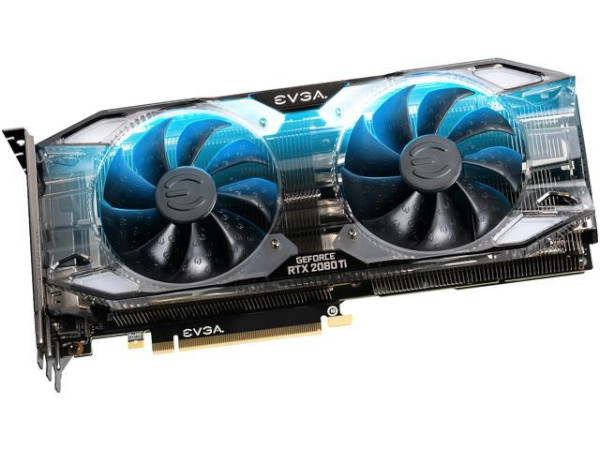
Tech Specs:
Memory: 11 GB GDDR6 | Base Clock: 1350 MHz | Boost Clock: 1650 MHz | CUDA Cores: 4352 | TDP: 250 W | Output: 3× DisplayPort 1.4, 1× HDMI 2.0b, 1× USB-C
Starting with our overkill GPU, the EVGA GeForce RTX 2080 Ti XC card will shred every title you’ll throw. Its sheer power can hit 240Hz in many games as long as your monitor can output that many frames.
This card is intended for premium graming. We’re talking about getting decent frames at 4K resolution with this card, so if you want the best 1440p experience at high frames (up to 240 frames per second in a handful of titles), this should give you the best experience.
EVGA has been consistent in producing high-quality products for the past decade. Through the years of development, they have developed better ways to make cooling even better. In the case of EVGA’s RTX 2080 Ti, they based the PCB on the Nvidia reference design but added a much more capable triple-slot, dual-fan thermal solution.
This addition allows the card to push more, roughly about 25Hz higher than the Founder’s edition. But this addition comes at a cost. But all things considered, you’ll experience high-quality gaming with no compromise whatsoever. And sure enough, you can forget about doing an upgrade in the next few years.
Not only that, it’s six times faster or ~33% better as compared to the previous-generation graphics card, but it also comes with both RTX technology and DLSS features to make gaming look more immersive.
But even then, there still aren’t that many games that support this feature yet. And since you’ll be holding on to this card for a few years, you should be able to enjoy all the current and upcoming games that support that feature without any compromise.
Overall, the RTX 2080 Ti card is an exceptional card that will handle over 100 fps in 4K resolution in games. If you’re looking to play games at 144 frames per second in 1440p resolution, this should net you more than you need for a couple of years.
2. Nvidia GeForce RTX 2070 Super
Best RTX Card for 1440p 144Hz gaming
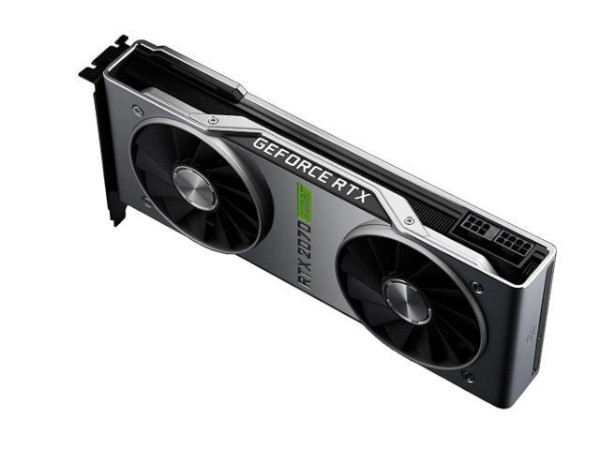
Tech Specs:
Memory: 8 GB GDDR6 | Base Clock: 1605 MHz | Boost Clock: 1770 MHz | CUDA Cores: 2560 | TDP: 215 W | Output: DisplayPort, HDMI
The RTX 2070 was one of the first graphics cards bearing the Turing architecture. This technology produces a more immersive graphics output by reflecting realistic lighting and reflections in games.
Even though it’s significantly more potent than its predecessor– the GTX 1070, it has still disappointed plenty of users compared to the GTX 1080 Ti’s price-to-performance output. You see, the RTX 2070 only has 8GB of VRAM compared to GTX 1080 Ti’s 11GB.
But just months later, after the initial release, the RTX 20 Super cards hit the market. And according to Nvidia, these GPUs have more cores, higher clock speeds, and better overall performance for free! That’s because they’re still rocking the same price as the vanilla RTX cards.
On paper, the RTX 2070 Super is said to be ~10% faster than the vanilla RTX 2070 cards and only about ~5% slower than the vanilla RTX 2080. With that, I consider the RTX 2070 Super an excellent option for people looking to join the ranks of high-end PC gaming.
With this graphics card, you can surely attain 1440p resolution when playing games. However, you might need to tone some graphics settings down a bit if you want to play your favorite AAA titles to get a stable 144Hz experience.
But don’t worry because you can still hit between 60 FPS – 100 FPS on virtually every AAA title at max settings. MOBA and eSports titles shouldn’t be a problem, and running 144 frames per second at 1440p should be easy for the card.
What makes this card even better for 1440p 144Hz gaming is the fact that it comes with the RTX and DLSS feature. Enabling DLSS settings on specific titles should net you more frames without compromising graphics quality and performance.
To further make your gaming experience smoother, these cards are compatible with monitors that come with the G-Sync feature. Taking all into consideration, you should experience high-quality gaming with no screen-tearing at all.
But for those who own a monitor with FreeSync technology, our best AMD card for 1440p 144Hz should give you just about the same performance minus the RTX and DLSS feature. And oh, price as well since AMD cards are notably cheaper than its Nvidia counterpart.
Expect that you’ll need a case with a decent amount of fans since the card falls under the premium category and rated to have a TDP of 215 W. Now looking at the back, the card comes with 3x DisplayPort and 1x HDMI port.
Ultimately, the RTX 2070 Super cards offer phenomenal gaming experience with almost no compromise. And if you find the RTX 2080 Ti card to be slightly out of your budget, this should give you all the things you need to enjoy high-quality gaming.
On the other hand, I highly recommend the GTX 1080 Ti if you don’t really want the RTX and the DLSS feature. If that’s something you’re interested in, then read on.
3. EVGA GeForce GTX 1080 Ti FTW3 GAMING
Best GeForce GTX Card for Gaming at 1440p 144Hz
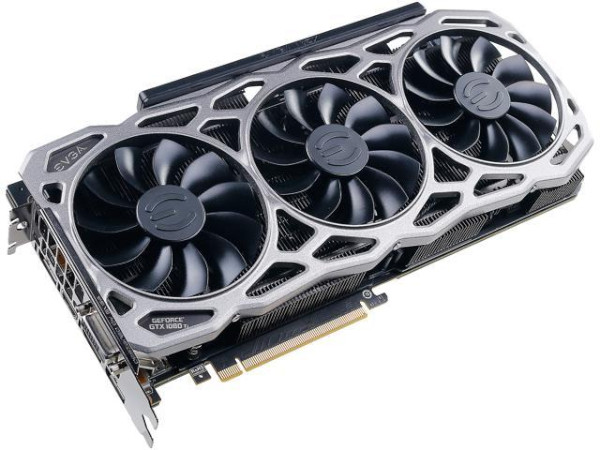
Tech Specs:
Memory: 11 GB of GDDR5X | Base Clock: 1569 MHz | Boost Clock: 1683 MHz | CUDA Cores: 3584 | TDP: 250 W | Output: 3 x DisplayPort 1.4, 1 x HDMI 2.0b, 1 x DVI-D DL
If you don’t need the RTX feature, I recommend the EVGA GeForce GTX 1080 Ti FTW3 Gaming card. On paper, this performs 16% better than Nvidia’s latest RTX 2070 Super GPU.
But because this lacks the RTX and DLSS feature, others might not be as interested. However, people engaged in pure quality gaming would love the performance increase over the RTX 2070 Super.
Because this was Nvidia’s previous flagship, we can’t really think of something we don’t like about the card other than the price and high TDP. But for someone who’s looking to get a premium card like this, I expect that they must already have a casing with decent airflow inside.
But if you’re not into air cooling, you can grab the other version of this card, which has the AIO cooler instead. Needless to say, that’s going to cost slightly more. But if you’re concerned about the performance, don’t worry– EVGA has a long history of delivering some of the top-notch graphics cards in the market, even some of the best performing and the fastest.
You can also guarantee a cooler performance since the card has three fans. The iCX design lets you safely overclock the card and get steady performance since it runs at a lower temperature than the rest of its competitors.
Thanks to EVGA’s temperature monitoring feature located in critical parts of the card, it can push harder as needed since fans automatically adjust to meet the required cooling demand.
Even more surprising is how the standard fan curve performs so well that you can’t almost detect any noise inside the case on regular use. If you’re wondering how loud the card can go when under 100%, it was found to produce only 36dBA, and that’s totally acceptable for a card this powerful.
To put it simply, this card was once at the top of the food chain, so it’s intended to hit high frames at 4K resolution. The question then on whether this can deliver 144 frames per second on a 1440p resolution is out of the problem.
The card comes with a 3-year warranty, which assures you that you will enjoy your GTX 1080 Ti in the coming years. Now, if that’s not enough, you can choose to extend the warranty.
4. Nvidia GeForce RTX 2060 Super
Best NVIDIA Super Card for Gaming at 1440p on a 144Hz Monitor
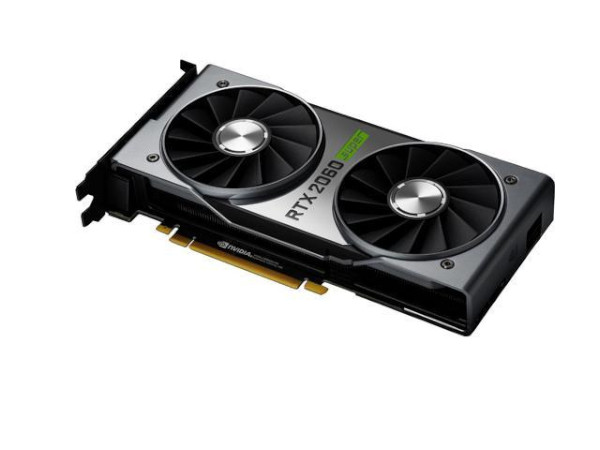
Tech Specs:
Memory: 8 GB GDDR6 | Base Clock: 1470 MHz | Boost Clock: 1650 MHz | CUDA Cores: 2176 | TDP: 175 W | Output: DisplayPort, HDMI, DVI-DLStandard
If you’re looking for a more affordable option, the best you can get your hands on in the mid-range category will be the RTX 2060 Super cards.
Like the RTX 2070 Super performs over the vanilla RTX 2070 cards, the RTX 2060 Super cards are found to deliver an average of 12% better than the original 2060 cards.
But unlike how the RTX 2070 Super cards are priced to the vanilla 2070, the RTX 2060 Super is a bit more expensive than the original RTX 2060. But don’t worry, the price difference isn’t that big of a difference.
Essentially, the RTX 2060 Super has a higher core count, has a higher boost clock, and performs better in general. Performance-wise though, this can’t handle 4K resolution gaming as compared to the abovementioned graphics cards. However, it does perform reasonably well in 1440p resolution and could even hit 144 frames per second without struggling too much.
The card handles 1080p and 1440p resolution so well that they’re highly recommended for gamers looking to purchase or upgrade to mid-range gaming. With this card, you’ll want to hit higher resolutions at max settings, and thanks to the improved performance, this can take almost every game at max settings and still hit an average of 100 frames per second.
However, AAA titles like Deus EX and Metro Exodus, which are more graphically demanding, might have a hard time hitting over 60 frames at max settings. But with some tweaks and adjustments in the graphics settings, it should be done nonetheless. Plus, it comes with a DLSS feature, which should help as long as the game supports it.
Indie games, eSports games, and other RPG games should be able to hit high frames per second at 1440p resolution, and even 4K resolution in older titles. And if you’re using an older monitor, the card is thoughtful enough to include a legacy DVI port.
Even though there are only a few titles that support RTX feature and DLSS in 2020, this still is a smart investment if you’re all about future-proofing. It’s also worth mentioning that this card works perfectly with monitors that support G-Sync technology since it’s an Nvidia card.
But note that even though there’s nothing wrong if it doesn’t support any Adaptive-Sync technology or if it only supports FreeSync technology (for AMD card users), you’re still better off picking the right card to maximize your experience.
Now, if you just found out that your monitor only supports FreeSync technology, then the next graphics card is the perfect card for you.
5. Asus Radeon RX 5700
Best AMD RX Card for 1440p 144Hz Gaming
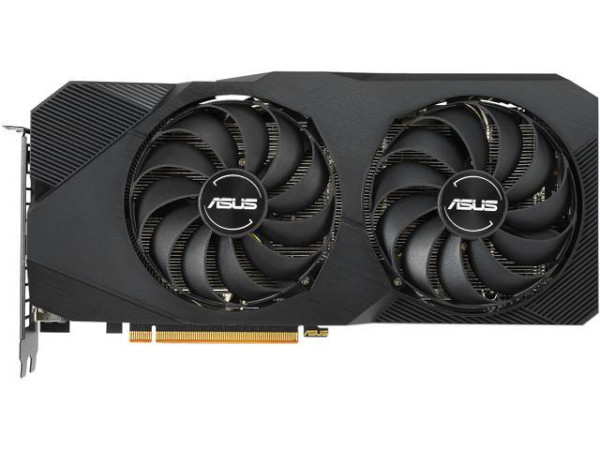
Tech Specs:
Memory: 8 GB GDDR6 | Base Clock: 1465 MHz | Boost Clock: 1725 MHz | Stream Processor: 2304 | TDP: 225 W | Output: DisplayPort 1.4, HDMI
The Radeon RX 5700 is AMD’s second NAVI 10 graphics card. Although they slightly outperformed the original RTX 2060 cards, they still lack a handful of features you’ll only find in RTX cards, such as the ray tracing and the DLSS features.
Technically speaking, these don’t seem ideal as an investment, but if you take into account the price to performance, these will look more appealing since they’re way cheaper than the RTX cards. Plus, these cards should work correctly with monitors that support FreeSync technology.
Because these cards perform just as good as Nvidia’s RTX cards, you won’t be disappointed with the results. In fact, they perform so well that gaming at 1440p resolution will net you high frame rates. Of course, how high it could go depends on the game.
AAA titles shouldn’t be a big of a problem since these cards do pack a punch. However, AAA titles that demand more graphical power like Metro Exodus and Deus EX will push the cards to its limits. This means getting 144 frames per second at 1440p won’t just be possible unless you tone some graphics settings down.
On the other hand, if you’re going to be playing eSports titles like CS:GO and Overwatch, or MOBA games like DOTA 2 and League of Legends, this card should be able to hit 144 frames per second without breaking a sweat.
While it’s true that the RX 5700 XT does perform better, it performs only slightly that it’s not going to be worth getting considering how big of a gap the prices are. We’re talking only 5-10 frames per second difference.
And because this can hit over 100 frames (and almost hitting 144 frames per second) easily in most games, we don’t really recommend the 5700 XT unless you can spare a few more dollars for an average of only 5 to 10 frames per second of difference. Or you can just save up the money and use it for new gaming peripherals and overclock the card instead.
If you’re new to graphics cards or just don’t want to push it over its limit, rendering it useless, I suggest you stick with the default core speeds and settings. But if you’re the advanced user, overclocking the card will net you a significant increase in performance to maximize every single frame of your 144Hz monitor.
Again, we don’t really recommend overclocking unless you know by heart what you’re doing.
6. ZOTAC Nvidia GeForce GTX 1660 Ti
Best Budget Card for 1440p 144Hz Gaming
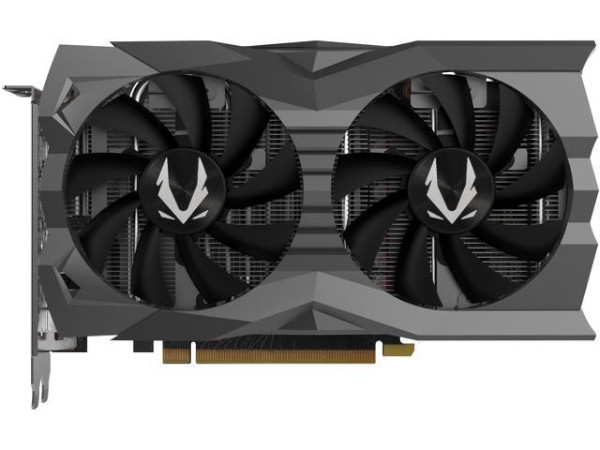
Tech Specs:
Memory: 6 GB GDDR6 | Base Clock: 1500 MHz | Boost Clock: 1770 MHz | CUDA Cores: 1536 | TDP: 120 W | Output: 3 x DisplayPort 1.4, HDMI 2.0b
Our roundup won’t be complete without our budget pick. Quite honestly, this card doesn’t fall under the budget category in 1080p gaming as it can handle 1080p resolution outstandingly on most titles, hitting over 100+ frames per second.
Since we’re talking gaming on a 1440p resolution monitor with 144Hz of refresh rate, this would fall entirely as a budget option. You see, it may be powerful enough for 1080p gaming, but it only is partially capable of 1440p. Because though it can handle 1440p, it can only push a little over 70 frames per second on most titles.
If you’ve owned a GTX 1070 graphics card, you’ll see a very similar performance output. Well, almost, since the GTX 1070 card still performs better but only about ~7%. If I’m honest, you won’t notice any significant difference when it comes to real-time usage.
If there’s something I like about the card: it’s the size– it’s compact, so it doesn’t take too much space inside your case. But contrary to popular belief, this small card doesn’t compromise its performance. I’m even surprised at how well it keeps the temperature low even when under load.
The best part? It’s not loud. I can barely hear any whirring sounds when playing Assassin’s Creed: Odyssey, one of the most graphically demanding games to date at ultra settings. It virtually pushes the card to 100% usage, and you can’t even hear a thing.
Indie games and eSports titles such as CS:GO, Fortnite, Valorant, Rocket League, and MOBA games like League of Legends, DOTA 2, Hearthstone, will run smoothly at 144Hz on 1440p resolution on this card.
But note that this will only net you around ~45 to ~75 frames per second on AAA titles such as Assassin’s Creed: Odyssey, and The Witcher 3, depending on the game. Other more graphically demanding games like Deus Ex: Mankind Divided, Metro Exodus, and Hitman 2.
Since this is a card from Nvidia, you can maximize your gaming experience by turning the G-Sync technology on to get rid of screen tearing. And if you’re thinking of overclocking the card to push out more frames, just don’t.
The card’s cooling capability may be great but is not ideal for overclocking. Honestly, gaining a few frames in exchange for the risk of breaking your card is not something you’d want to gamble, especially if you’re on a budget.
But if you do know your way around or go the extra mile by investing in a water cooling setup, I don’t see any reason you shouldn’t.
To summarize, this card should be able to handle most titles at 1440p and hit 144 frames per second on eSports and older games. However, newer AAA titles will require a little bit of compromise in the graphic department to get 60 frames per second at 1440p resolution consistently.
Overall, it’s the best budget card for 1440p gaming. And if you wish to upgrade down the line, I highly recommend the RTX 2060 Super. The significant boost in frames and the new RTX and DLSS features should give you more justice then.
Essential Things to Consider when Buying Graphics Cards
As of 2020, there are plenty of manufacturers in the market, such as Asus, Gigabyte, PNY, Zotac, Palit, EVGA, MSI, and more. As said earlier, these manufacturers are using different marketing strategies that make buying look more confusing and more technical than it already is.
But in reality, picking the right one isn’t that hard at all– as long as you consider the following things before buying.
AMD or Nvidia?
If I’m honest, you won’t go wrong with either AMD or Nvidia as it boils down to preference.
Between the two, AMD graphics cards are more affordable and less power-efficient than Nvidia’s latest flagships. That’s why we recommend AMD cards if you’re on a tight budget.
On the other hand, if money isn’t an object, get an Nvidia graphics card to experience the best graphical performance. But note that these cards can cost as much as three times more than AMD’s most expensive cards. In terms of performance, it does deliver.
You’ll also want to check what monitor you have. You see, some monitors can support Adaptive-Sync technology, which eliminates screen tearing in games. If it supports G-Sync technology, you’ll want an Nvidia card to make use of that feature. On the other hand, get an AMD graphics card if it supports FreeSync technology.
TDP… what?
Since graphics cards do most of the work when gaming, it produces a lot of heat. The amount of heat a component is expected to output when underload is called TDP or Thermal Design Power.
If the graphics card’s TDP value is high, you will need an ample amount of fans to get rid of the heat from the system more effectively.
Essentially, the idea is to pair smaller computers with GPU’s with a lower TDP value and large computers with GPU’s with a higher TDP value (although they can be flexible). Adding the right number of fans and heatsinks can make a huge difference to the computer’s longevity.
Memory and Bandwidth
Similar to computer RAM, graphic processors store data when doing computations. In the case of graphics cards, they are stored in a Video Random Access Memory or VRAM (pronounced V-RAM).
Graphics cards come with VRAM that ranges greatly from 2GB to as much as 12GB of VRAM. Needless to say, it pays to check how much VRAM a graphics card has when purchasing as it plays a vital role in making images look better and sharper at higher resolutions.
In 2020, 4GB of VRAM is still viable. But considering how 8GB of VRAM is slowly taking the spotlight, we recommend aiming for at least 8GB of VRAM if you want to future-proof your investment– or if you want to play games at 1440p on a 144Hz monitor.
Since most mid- to high-end graphics cards come with high memory by default, this shouldn’t be too much of an issue when gaming at 1440p on a 144Hz monitor. But bandwidth will be something you should be concerned more about.
The bandwidth is a measure of the data transfer speed the bus can handle at a given time. Depending on how fast a GPU’s bandwidth will be, a graphics card can quickly access and use its framebuffer.
The data ready to be processed by the GPU is stored on a card’s dedicated memory called GDDR3 and GDDR5. Essentially, the higher the memory bandwidth, the better it performs, so aim for at least GDDR5.
Shader Cores (CUDA Cores and Stream Processors)
Shader cores are responsible for rendering outstanding visuals. In gaming, they play an essential role.
Depending on the manufacturer of the graphics card will be how the shader cores are called. Nvidia’s proprietary parallel computing language is called CUDA Cores (Compute Unified Device Architecture), while AMD calls theirs as Stream Processors.
Needless to say, the more the number of shader cores a GPU has, the better they perform at rendering, handling intensive graphics work, and more frames.
Clock Speed
The GPU clock speed, measured in Mhz, determines how fast the graphics card processes data. Depending on how fast the clock speed perform affects the input lag, frame rate, and latency of games.
Graphics cards are already set at a specific speed, but some can be overclocked to perform even faster. In exchange, this reflects a higher TDP and will usually require a third-party cooler to keep temperatures down.
Output Ports
Ports are the most important things you shouldn’t miss when shopping for a graphics card. Make sure your monitor and the graphics card are compatible to avoid unwanted incompatibility problems down the line.
In the case of 1440p 144Hz gaming, you will need at least an HDMI 2.0 or a DisplayPort 1.2. Other graphics cards included in this roundup can handle 4K at lower frame rates. If that’s something you might be interested in, check if it has an HDMI 2.1 or a DisplayPort 1.4.
Furthermore, if you’re planning to have more than one monitor, it also pays to check that the graphics card can output as many monitors.
Popular FAQs
Which GPU for 1440p 144hz?
That depends on your budget. If you want a no-compromise investment, the EVGA GeForce RTX 2080 Ti XC is a highly recommended option. The GeForce GTX 1080 Ti is also another if you don’t need the RTX feature. The AMD Radeon RX 5700 is perfect for AMD users to take advantage of the FreeSync technology. Lastly, if you’re on a budget, the GTX 1660 Ti is a good entry-level card for 1440p 144Hz gaming.
Can a RTX 2070 run 1440p 144hz?
Yes, definitely. But I recommend you get the RTX 2070 Super since it offers better overall performance for free. Well, not really, but it cost as much as the vanilla RTX 2070.
Is a GTX 1080 good for 1440p 144hz?
It’s a good investment, but you’re better off getting an RTX 2070 Super as it costs way cheaper and performs better. On paper, it performs ~13% better compared to the GTX 1080.
What Graphics Cards Can Run 144hz?
There are plenty of graphics cards that can hit 144 frames at 1080p resolution. In fact, our budget card on the list (GTX 1660 Ti) can do that with little to no compromise.
Conclusion
Ultimately, picking the right graphics card depends on how much money you can spare. Our detailed review and buying guide should lead you to the perfect one. To sum up…
- We recommend the EVGA GeForce RTX 2080 Ti XC if you wish to go all in and make a sound future-proof investment as it doesn’t compromise anything at all.
- For most consumers, the Nvidia GeForce RTX 2070 Super will be a great option if you find the RTX 2080 Ti cards a little expensive.
- If you don’t need the Ray Tracing technology or the DLSS feature, we highly recommend the EVGA GeForce GTX 1080 Ti FTW3 GAMING for its sheer power.
- Do you fancy the Ray Tracing technology? The Nvidia GeForce RTX 2060 Super will be a good entry-level option.
- Get the Asus AMD Radeon RX 5700 if you’re an AMD user or if you own a monitor with FreeSync technology to eliminate screen tearing.
- Lastly, if you’re all about eSports titles and want to maximize your 1440p experience by hitting as high as 144 frames per second, the Nvidia GeForce GTX 1660 Ti should deliver.
Which card do you think works for your needs? If you have any suggestions or questions, tell us in the comment section!

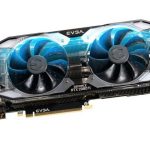

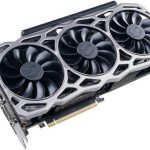
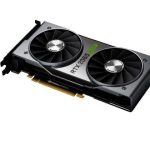
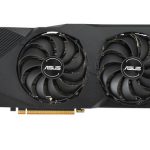
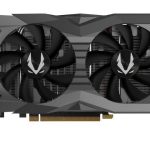





Muchas gracias x la ayuda… me ha sido de gran utilidad…
you’re welcome! which GPU are you looking to get?